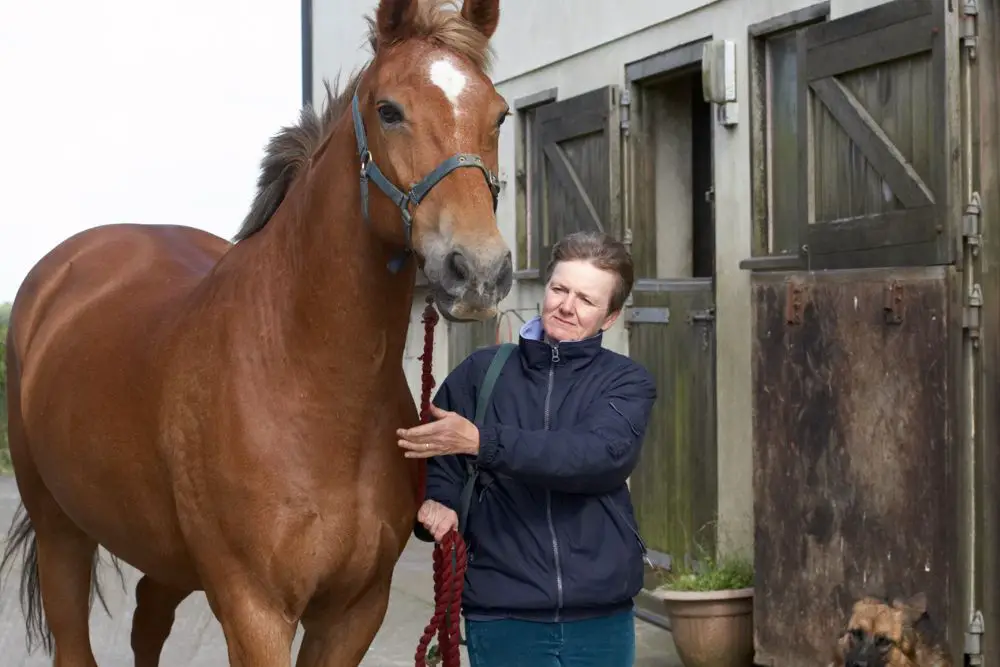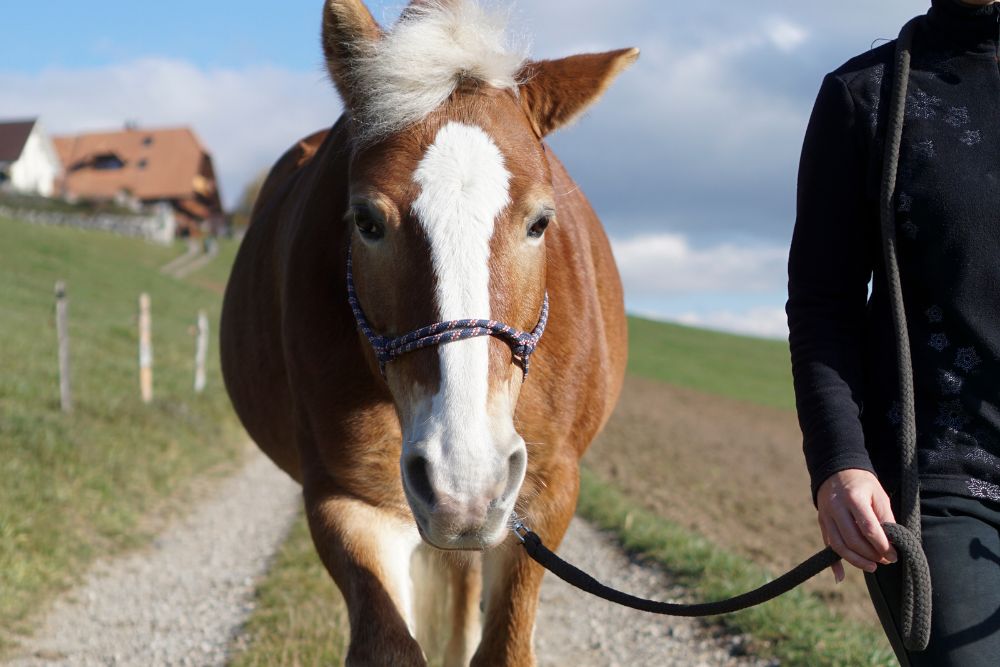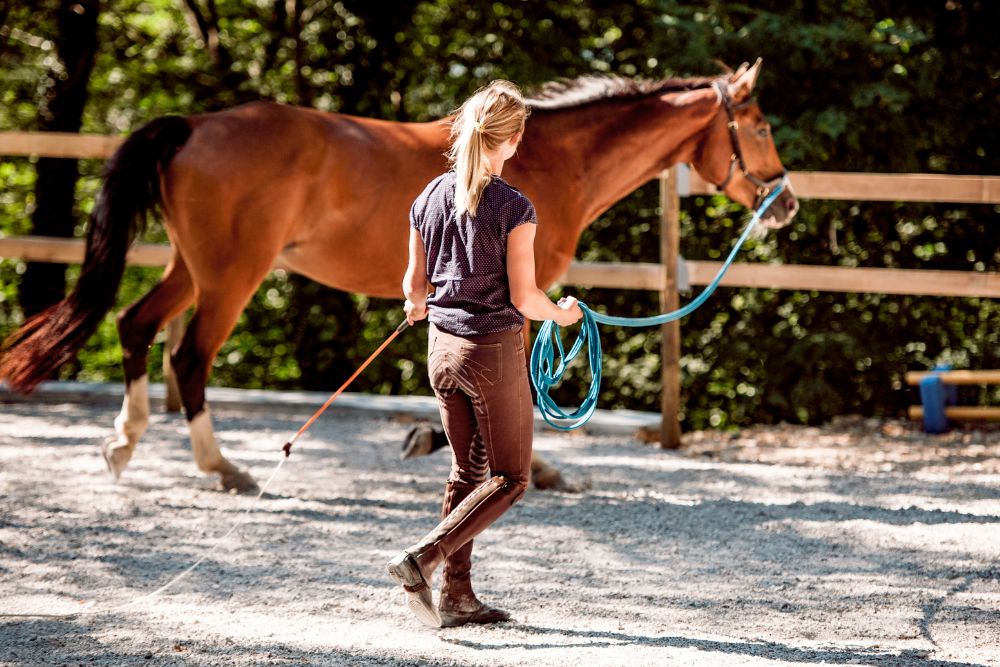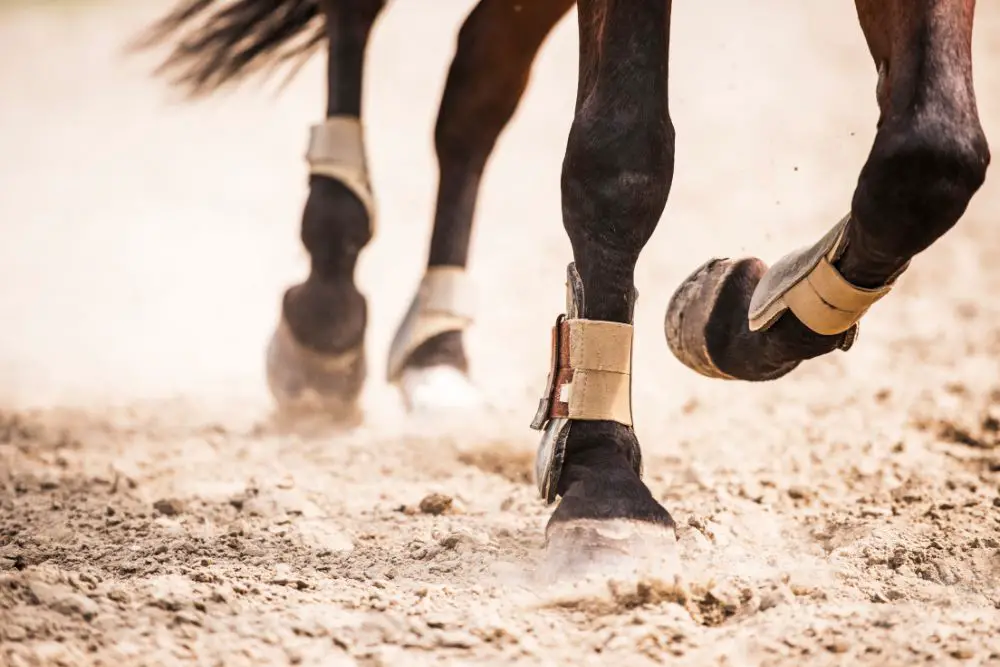Are you a horse owner or enthusiast who has noticed that your equine companion is not moving as comfortably as usual?
This may be a sign that your horse is lame.
If you’re involved in the equestrian world, you may have heard the term “lameness” used to describe a horse’s movement. Put simply, lameness is when a horse experiences a reduction in their normal gait or movement. This can be caused by a range of factors, including injuries, infections, or arthritis.
It’s important to be able to recognize the signs of lameness, such as limping, uneven movement, or reluctance to move. Being aware of these signs can help you detect lameness early on and seek treatment to prevent further damage and discomfort for your horse.
In this article, I’ll go over what exactly lameness is, what causes it, and what you can do to help your horse if they are showing signs of lameness.
As a responsible and caring horse owner, it’s crucial to have this knowledge under your belt. So, let’s get started!
Table of Contents

My Horse Is Lame! What This Means
Lameness in horses is a common problem that can have a significant impact on their ability to move and function normally.
Defined as an abnormal stance or gait caused by a disorder of the locomotor system, lameness can result in the horse being unwilling or unable to stand or move normally.
There are many potential causes of lameness in horses, including trauma, congenital or acquired disorders, infection, metabolic disorders, or nervous and circulatory system disease.
This medical condition affects the way a horse walks, runs, or stands, and is characterized by an abnormal gait.
Lameness can affect any leg or limb, and the severity of the condition can vary widely.
In some cases, it may be temporary and resolve on its own, while in other cases, it may be chronic and require ongoing treatment.
Regardless of the cause or severity of the lameness, it is the most common cause of loss of use in horses.

Causes of Lameness in Horses
Lameness in horses can be caused by a wide range of factors, including:
1. Injuries
Injuries are a common cause of lameness in horses.
They can range from simple cuts and bruises to more serious injuries like fractures or sprains.
Injuries can occur in any part of the horse’s body, but they are most common in the legs and hooves.
2. Arthritis
Arthritis is another common cause of lameness in horses.
It is a degenerative joint disease that causes inflammation and pain in the joints.
Arthritis can affect any joint in the horse’s body, but it is most commonly seen in the hocks, knees, and fetlocks.
3. Infections
Infections can also cause lameness in horses.
Bacterial and viral infections can affect any part of the horse’s body, including the joints, muscles, and bones.
Infections can cause pain, inflammation, and fever, and can lead to lameness if left untreated.
4. Neurological Conditions
Neurological conditions, such as equine protozoal myeloencephalitis (EPM), can also cause lameness in horses.
These conditions affect the horse’s nervous system and can cause weakness, incoordination, and abnormal gait.
Signs and Symptoms of Lameness in Horses
The signs and symptoms of lameness in horses can vary depending on the severity and cause of the condition. Some common signs and symptoms of lameness include:
- Limping or favoring one leg over the others
- Shortened stride or reluctance to move
- Stumbling or tripping
- Uneven weight distribution
- Swelling or heat in the affected area
- Changes in behavior or temperament

Diagnosing Lameness in Horses
Diagnosing lameness in horses can be a challenging process, as there are many potential causes of the condition.
To diagnose lameness, a veterinarian will typically perform a physical exam and evaluate the horse’s gait and movement.
They may also perform diagnostic tests, such as X-rays, ultrasounds, or joint taps, to determine the underlying cause of the lameness.
Treatment of Lameness in Horses
The treatment for lameness in horses will depend on the underlying cause of the condition.
In some cases, rest and supportive care may be enough to allow the horse to heal on their own.
In other cases, more aggressive treatment may be necessary, such as medication, surgery, or physical therapy.
It is important to work closely with a veterinarian to develop a treatment plan that is appropriate for the horse’s specific needs.
Preventing Lameness in Horses
Preventing lameness in horses is an important aspect of horse care. Some ways to prevent lameness include:
- Providing proper nutrition and exercise
- Maintaining proper hoof care
- Providing appropriate footing and terrain
- Taking steps to prevent injuries
- Regular veterinary check-ups

Common Myths About Lameness in Horses
There are many common myths and misconceptions about lameness in horses. These myths can often lead to improper care and treatment, and may even make the condition worse.
Some of these include:
- Lameness only affects older horses
- Rest is the best treatment for all cases of lameness
- All lameness is caused by an injury
- Horses will always “walk it off” if they are in pain
It is important to seek professional advice from a veterinarian rather than relying on myths and misconceptions about lameness in horses.
Lameness only affects older horses. In reality, horses of all ages can experience lameness, and it can be caused by a variety of factors including genetics, conformation, and injury.
Rest is always the best treatment for lameness. While rest may be appropriate for some cases of lameness, it is not always the best course of action.
Depending on the cause of the lameness, specific treatments such as medication or surgery may be necessary.
All cases of lameness are caused by an injury. However, lameness can be caused by a wide range of factors including joint disease, muscle strain, and even systemic conditions such as metabolic disorders.
Horses will always “walk it off” if they are in pain. This is not true, and can actually be dangerous.
If a horse is experiencing lameness, it is important to seek professional veterinary advice and treatment rather than assuming that the horse will recover on its own.
It is important for horse owners to seek professional advice from a veterinarian and to be educated about the true causes and treatments of lameness in horses.
The Cost of Treating Lameness in Horses
The cost of treating lameness in horses can vary widely depending on the severity and cause of the condition.
In some cases, treatment may be relatively inexpensive, such as rest and supportive care.
In other cases, more aggressive treatment, such as surgery or medication, may be necessary and can be quite costly.
It is important for horse owners to budget for potential veterinary expenses and consider purchasing equine insurance to help offset the cost of unexpected veterinary bills.
Coping With a Lame Horse
Coping with a lame horse can be emotionally and financially challenging.
It is important to work closely with a veterinarian to develop a treatment plan and to provide the horse with the care and support they need during their recovery.
Additionally, seeking support from friends, family, and other horse owners can help ease the emotional burden of coping with a lame horse.
Frequently Asked Questions About Lameness in Horses
Can lameness be prevented?
Lameness in horses can be prevented in some cases by providing proper nutrition and exercise, maintaining proper hoof care, providing appropriate footing and terrain, taking steps to prevent injuries, and scheduling regular veterinary check-ups.
However, lameness can still occur despite preventative measures, so it is important to be familiar with the signs and symptoms and to seek veterinary care promptly if lameness is suspected.
How is lameness diagnosed in horses?
Lameness in horses is typically diagnosed through a combination of physical examination, observation of gait and movement, and diagnostic tests such as X-rays, ultrasounds, or joint taps.
A veterinarian will typically work with the owner to develop a treatment plan based on the underlying cause of the lameness.
What are the most common causes of lameness in horses?
The most common causes of lameness in horses include injuries, arthritis, infections, and neurological conditions.
Injuries to the legs and hooves are particularly common, but lameness can also be caused by issues affecting other parts of the horse’s body, such as the spine or nervous system.
What is the treatment for lameness in horses?
The treatment for lameness in horses will depend on the underlying cause of the condition.
In some cases, rest and supportive care may be enough to allow the horse to heal on their own. In other cases, more aggressive treatment may be necessary, such as medication, surgery, or physical therapy.
It is important to work closely with a veterinarian to develop a treatment plan that is appropriate for the horse’s specific needs.
Is lameness a serious condition in horses?
Lameness can be a serious condition in horses, particularly if left untreated or if the underlying cause is a serious injury or condition.
In addition to causing pain and discomfort, lameness can also affect a horse’s ability to move and perform normal activities.
Prompt veterinary care and appropriate treatment can help minimize the impact of lameness and improve the horse’s overall quality of life.

Conclusion
Lameness in horses is a common and complex medical condition that can have a significant impact on a horse’s well-being and quality of life.
It is important for horse owners to be familiar with the signs and symptoms of lameness, as well as the various causes and treatment options.
By working closely with a veterinarian and taking steps to prevent lameness, horse owners can help keep their horses healthy and happy for years to come.
If you want to learn more about how to care for your horse and keep them healthy, be sure to check out our other blog posts for more information!
Cheers, Kacey
P.S. Did you like this article? Gallop over to:

